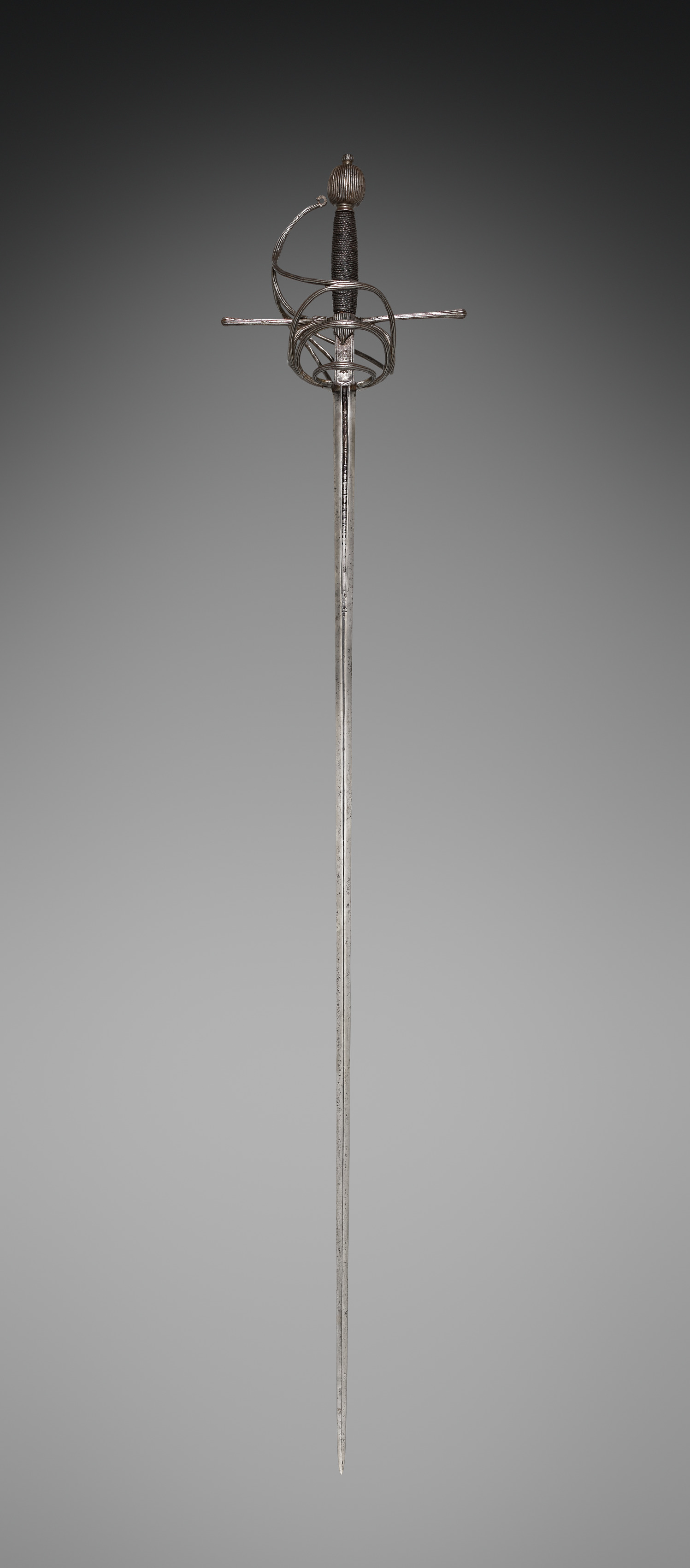The Cleveland Museum of Art
Collection Online as of April 24, 2024

Rapier
c. 1580–1610
Overall: 135.9 cm (53 1/2 in.); Blade: 111.1 cm (43 3/4 in.); Quillions: 25.5 cm (10 1/16 in.); Grip: 16.5 cm (6 1/2 in.)
Location: 210A Armor Court
Did You Know?
During this time fencing academies were already in existence in Milan, Venice, Verona, and Madrid, and the rules of fencing evolved with two styles dominating, the Spanish and the Italian.Description
The rapier was a sword worn with civilian dress and used in duels. The term rapier derives from the 16th-century French word rapière, which in turn derived from the Spanish espada ropera, or “dress sword.” The rapier was a light weapon with a straight double-edged and pointed blade that, with the development of the art of fencing in the 1500s and 1600s, gradually became narrower and lighter, and thus suitable for thrusts only. With the new technique of swordplay emphasizing the point of the blade, sword guards became more complex to protect the duelist’s unarmored hand. These elaborate guards were frequently decorated by various techniques—chiseling, bluing, russeting, and damascening.- ?-1974Bascom Little Estate, Cleveland, OH, gifted to the Cleveland Museum of Art
- Fliegel, Stephen N. Arms and Armor: The Cleveland Museum of Art. [Cleveland, Ohio]: The Museum, 1998. p. 113, 173, cat. no. 201Fliegel, Stephen N. Arms & Armor: The Cleveland Museum of Art. [Cleveland, Ohio]: Cleveland Museum of Art, 2007. cat. no. 172, p. 191
- Armor Court Reinstallation. The Cleveland Museum of Art (organizer).European Arms and Armor from the Cleveland Museum of Art (Long-term Loan). Birmingham Museum of Art (organizer) (July 1, 1993-July 1, 1995).Year in Review: 1974. The Cleveland Museum of Art, Cleveland, OH (organizer) (March 11-April 6, 1975).
- {{cite web|title=Rapier|url=false|author=|year=c. 1580–1610|access-date=24 April 2024|publisher=Cleveland Museum of Art}}
Source URL:
https://www.clevelandart.org/art/1974.59